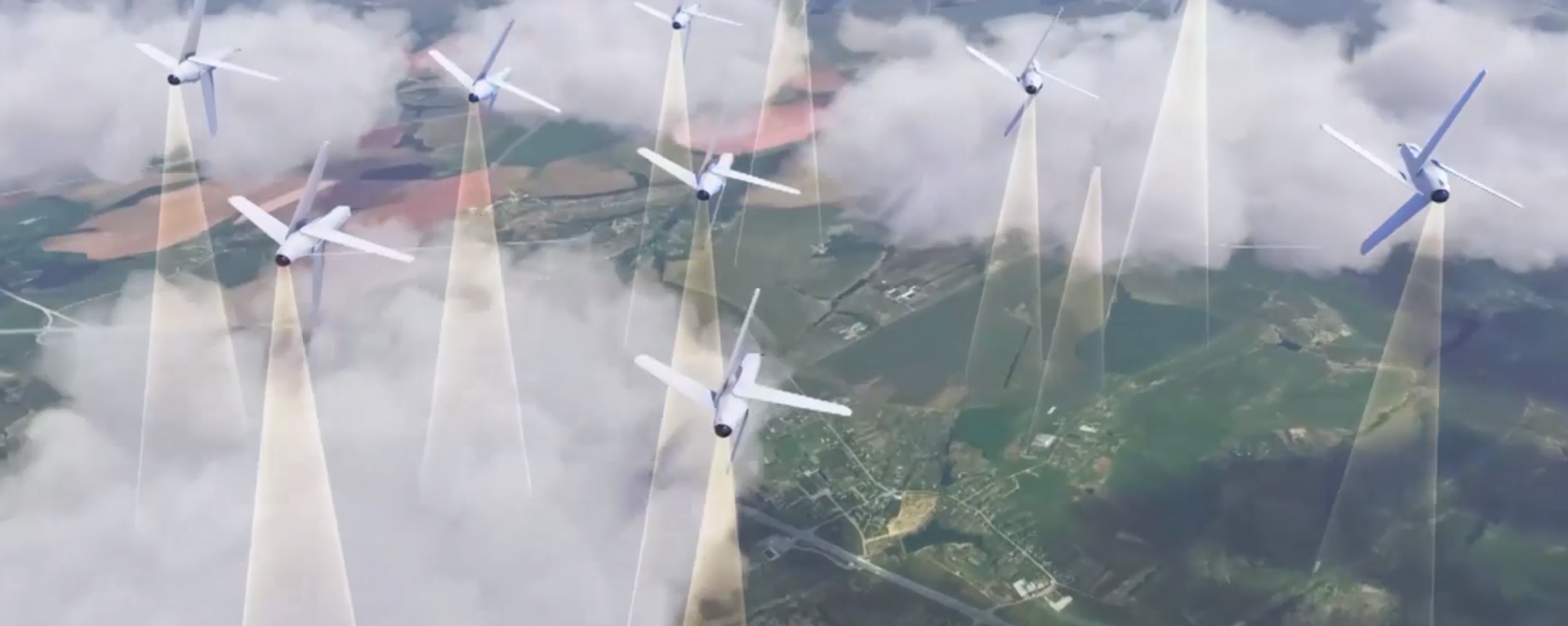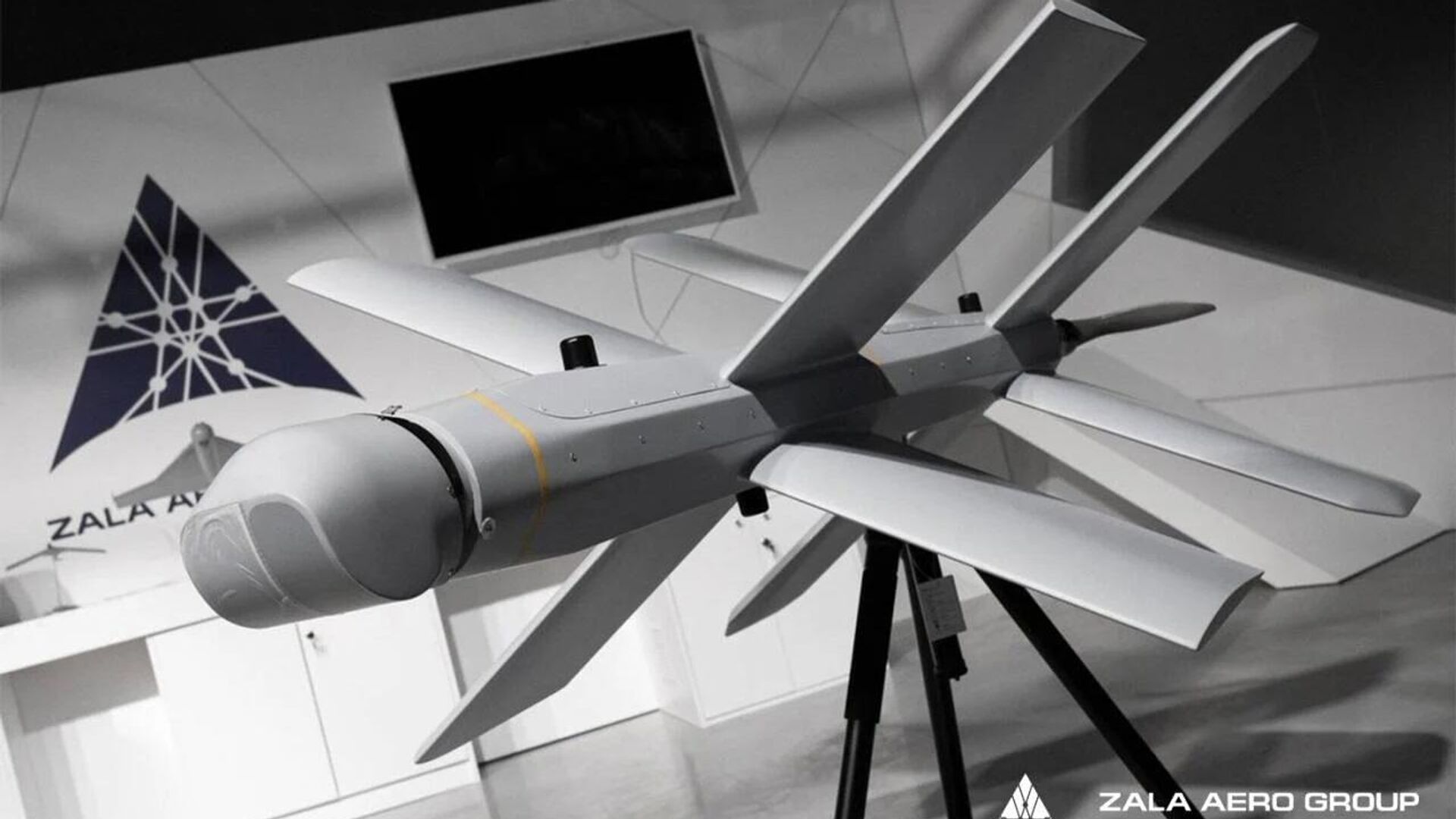https://sputnikglobe.com/20230925/russias-uavs-tested-to-ensure-efficiency-during-winters-ice-low-temperatures-1113648153.html
Russia's UAVs ‘Tested to Ensure Efficiency’ During Winter's Ice, Low Temperatures
Russia's UAVs ‘Tested to Ensure Efficiency’ During Winter's Ice, Low Temperatures
Sputnik International
Russia's unmanned aerial vehicles are thoroughly tested, with characteristics modified to ensure efficacious exploitation in the winter months, Edward Bagdasarian, a UAV expert, head of the “Aerocon” company, told Sputnik.
2023-09-25T13:01+0000
2023-09-25T13:01+0000
2023-09-25T13:09+0000
russia
lancet
ukraine
uavs
unmanned aerial vehicle
military
https://cdn1.img.sputnikglobe.com/img/07e7/05/0f/1110378131_0:74:1280:794_1920x0_80_0_0_dee92ecc9d7f5235019068ce001eb107.jpg
Russia's unmanned aerial vehicles (UAV), like all military equipment, are tested before being brought into service. It is during testing that a device’s characteristics are “tweaked” and certain corrections made to ensure they can work properly in the winter months, Edward Bagdasarian, a UAV specialist and head of the Aerocon business - as well as an expert on the Aeronet working group - told Sputnik.As Western media speculates about the functionality of such UAVs as colder temperatures set in in the combat zone of the Ukraine conflict, he continued:That said, Bagdasarian acknowledged that winter weather affects the characteristics and technical capabilities of such devicesLow temperatures and becoming covered in ice are the two main difficulties encountered by those operating UAVs in winter, Artem Blinov, a UAV expert, told Sputnik.Accordingly, any drone that runs on batteries has its operating time significantly reduced, said the expert.The icing over mainly affects aircraft-type drones, said Blinov, because there is a possibility that, because of changes in humidity, altitude, and so on, a coating of ice will appear on the device, causing it to fall. Weather changes affect operational autonomy and makes it hard to control the device.Over the past few months, Russia's Lancet loitering munition/kamikaze attack drone has wreaked havoc on Ukrainian forces as they struggled to mount their much-hyped counteroffensive. Now, Russian drone designers have unveiled a next-generation variant, capable of hitting targets at a considerable distance, and as such, posing a threat to air bases of the Ukrainian Armed Forces (UAF), a US military news outlet has reported. A Ukrainian MiG-29 fighter jet was hit by a Lancet UAV from a distance of more than 80km (49 miles) in the rear of Russian defensive positions earlier, whereas the Lancet’s typical range is 40km. When it comes to using drones in winter, Bagdasarian likened the way the technology works to how the human body operates.When winter sets in, everything gets worse, he pointed out: chronic diseases start playing up, and generally all body organs react to the drop in temperature and the spike in humidity with the hostile conditions being exacerbated by wind and climatic conditions. "Therefore, the mechanical parts find it harder to work ... electronics, in principle… Generally speaking, in electronics there is a lot of lithium, polymer batteries, electric motors, all these mechanisms... Therefore, the equipment is harder to operate in winter as its reliability decreases, rendering it much harder to execute a combat mission," Bagdasarian explained.Aircraft-type drones are probably the most likely to encounter operational difficulties in horrible weather, as in their case you have to monitor a large number of readings and their changes, Blinov clarified. According to the expert, there is such a thing as a pressure indicator but if it is affected, "the UAV will no longer discern wind flow velocity, leaving it up to the operator to guide it using experience," he stressed.Rain, snow, all of this affects the range of the communication channels, Bagdasarian said. There is no denying that the quality of radio-wave transmission, accordingly, deteriorates, the expert added.Russia's Lancets, alongside various other types of drones, are being widely used in the Russian special military operation zone to offset Kiev’s faltering counteroffensive. Earlier this month General Mark Milley, former Joint Chiefs chairman, told Western press that colder conditions would make it much harder for Ukraine to maneuver. "Probably about 30 to 45 days' worth of fighting weather left," Milley said on 10 September, acknowledging how heavy rains will transform the battlefield into "impassable mud". Russia's President Vladimir Putin called Kiev's counteroffensive "more of a failure than a stalemate," adding that since its beginning in early June, the Ukrainian army had lost 71,000 soldiers, 543 tanks and nearly 18,000 armored vehicles of varying types.
https://sputnikglobe.com/20230816/product-53-what-are-capabilities-of-next-gen-variant-of-russias-lancet-kamikaze-drone-1112639748.html
https://sputnikglobe.com/20230924/russias-modified-lancet-drones-may-prod-ukraine-to-rearrange-its-military-assets---report-1113619231.html
russia
ukraine
Sputnik International
feedback@sputniknews.com
+74956456601
MIA „Rosiya Segodnya“
2023
News
en_EN
Sputnik International
feedback@sputniknews.com
+74956456601
MIA „Rosiya Segodnya“
Sputnik International
feedback@sputniknews.com
+74956456601
MIA „Rosiya Segodnya“
russia's unmanned aerial vehicles, russia's uavs, russian drones in ukraine, russia's lancet loitering munition, kamikaze attack drone
russia's unmanned aerial vehicles, russia's uavs, russian drones in ukraine, russia's lancet loitering munition, kamikaze attack drone
Russia's UAVs ‘Tested to Ensure Efficiency’ During Winter's Ice, Low Temperatures
13:01 GMT 25.09.2023 (Updated: 13:09 GMT 25.09.2023) Throughout Ukraine’s botched counteroffensive, Russia’s unmanned aerial vehicles (UAVs) have been relentlessly destroying the Kiev regime’s manpower and weaponry donated by NATO. Moscow’s new-generation drones are now reportedly posing a threat to air bases of the Ukrainian Armed Forces (UAF), as autumn and winter bring additional challenges.
Russia's
unmanned aerial vehicles (UAV), like all military equipment, are tested before being brought into service. It is during testing that a device’s characteristics are “tweaked” and certain corrections made to ensure they can work properly in the winter months,
Edward Bagdasarian, a UAV specialist and head of the Aerocon business - as well as an expert on the Aeronet working group - told Sputnik.
As Western media speculates about the functionality of such UAVs as colder temperatures set in in the combat zone of the
Ukraine conflict, he continued:
"We have a special military center in Russia that serves the purpose… All aviation equipment, including drones, undergo state testing there, naturally, both in summer and in winter to confirm their efficacy and eliminate possible problems that could emerge in winter's freezing temperatures."
That said, Bagdasarian acknowledged that winter weather affects the characteristics and technical capabilities of such devices
Low temperatures and becoming covered in ice are the two main difficulties encountered by those operating
UAVs in winter,
Artem Blinov, a UAV expert, told Sputnik.
Accordingly, any drone that runs on batteries has its operating time significantly reduced, said the expert.
The icing over mainly affects aircraft-type drones, said Blinov, because there is a possibility that, because of changes in humidity, altitude, and so on, a coating of ice will appear on the device, causing it to fall. Weather changes affect operational autonomy and makes it hard to control the device.
The Russian army uses Lancet drones in the special operation zone to target various Ukrainian military assets such as howitzers, air defenses, multiple launch rocket systems, as well as command and observation posts, and gatherings of troops.
Over the past few months, Russia's
Lancet loitering munition/kamikaze attack drone has wreaked havoc on Ukrainian forces as they struggled to mount their much-hyped
counteroffensive. Now, Russian drone designers have unveiled a next-generation variant, capable of hitting targets at a considerable distance, and as such, posing a threat to air bases of the Ukrainian Armed Forces (UAF), a US military news outlet has reported. A Ukrainian MiG-29 fighter jet was hit by a Lancet UAV from a distance of more than 80km (49 miles) in the rear of Russian defensive positions earlier, whereas the Lancet’s typical range is 40km.

16 August 2023, 12:38 GMT
When it comes to using drones in winter, Bagdasarian likened the way the technology works to how the human body operates.
When winter sets in, everything gets worse, he pointed out: chronic diseases start playing up, and generally all body organs react to the drop in temperature and the spike in humidity with the hostile conditions being exacerbated by wind and climatic conditions.
"Therefore, the mechanical parts find it harder to work ... electronics, in principle… Generally speaking, in electronics there is a lot of lithium, polymer batteries, electric motors, all these mechanisms... Therefore, the equipment is harder to operate in winter as its reliability decreases, rendering it much harder to execute a combat mission," Bagdasarian explained.
Aircraft-type drones are probably the most likely to encounter operational difficulties in horrible weather, as in their case you have to monitor a large number of readings and their changes, Blinov clarified. According to the expert, there is such a thing as a pressure indicator but if it is affected, "the UAV will no longer discern wind flow velocity, leaving it up to the operator to guide it using experience," he stressed.
Rain, snow, all of this affects the range of the communication channels, Bagdasarian said. There is no denying that the quality of radio-wave transmission, accordingly, deteriorates, the expert added.

24 September 2023, 06:28 GMT
Russia's Lancets, alongside various other types of drones, are being widely used in the Russian special military operation zone to offset
Kiev’s faltering counteroffensive. Earlier this month General Mark Milley, former Joint Chiefs chairman, told Western press that colder conditions would make it much harder for Ukraine to maneuver.
"Probably about 30 to 45 days' worth of fighting weather left," Milley said on 10 September, acknowledging how heavy rains will transform the battlefield into "impassable mud".
Russia's President Vladimir Putin called Kiev's counteroffensive "more of a failure than a stalemate," adding that since its beginning in early June, the Ukrainian army had lost 71,000 soldiers, 543 tanks and nearly 18,000 armored vehicles of varying types.






